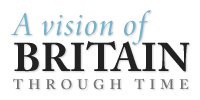In 1887, John Bartholomew's Gazetteer of the British Isles described Oxford like this:
Oxford, parl. and mun. bor., city, market town, and county town of Oxfordshire, chiefly in Oxfordshire but partly in Berks, between the rivers Cherwell and Thames, or Isis, 27 miles NW. of Reading and 63 from London by rail - parl. bor., 4557 ac., pop. 40,837; mun. bor., 2779 ac., pop. 35,264; town, pop. ...
39,186; 4 Banks, 7 newspapers. Market-days, Wednesday and Saturday. As a great seat of learning Oxford has for centuries upheld a high celebrity throughout the world. It has also a history of great interest and importance. Already in the 9th century (under the names of Oxnaford, Oxenford, and Ousford) it appears as an ancient academy of learning; it was twice besieged by the Danes, and was eventually surrendered to Sweyn in 1013; was stormed by William the Conqueror in 1067, and by King Stephen in 1142; and was the meeting-place of the "Mad Parliament" in 1264. In its subsequent history the chief events include the fearful "town and gown" disturbance in 1354; the preaching of Wickliffe in the reign of Edward III.; the martyrdom of Ridley, Latimer, and Cranmer in the reign of the "Bloody Mary;" the "Black Assize"of 1557; the city's adherence to the cause of Charles I., and its siege by Fairfax; and the Jacobite riots of 1715. Oxford is not a trading town, and has no manufactures of special importance. Business is generally supported by supplying the wants of the University, which now comprises 21 colleges and 4 halls. The oldest college is University College, founded, according to tradition, by Alfred the Great, while the most recent is Keble College, founded in 1868. The total revenues of the University are computed to reach #460,000. There are 44 professors - Theology, 7; Law, 4; Natural Science, including Medicine and Mathematics, 13; and Arts, 20. The total number of undergraduates is about 2600. Connected with the University are the following institutions: - the Bodleian Library (founded about 1602) with over 300,000 vols., the Ashmolean Museum, the Taylor Institution, University Galleries, Ruskin Drawing School, University Museum, Radcliffe Library, and the University Observatory. Oxford, besides its University, is celebrated for its splendid buildings. Christ Church Cathedral is a Norman and Early English edifice. The "Martyrs Monument" is a memorial to the memory of Cranmer, Latimer, and Ridley. Oxford University returns 2 members to Parliament. Oxford City returns 1 member; it returned 2 members until 1885.
Oxford through time
Click here for graphs and data of how Oxford has changed over two centuries. For statistics for historical units named after Oxford go to Units and Statistics.
GB Historical GIS / University of Portsmouth, History of Oxford in Oxfordshire | Map and description, A Vision of Britain through Time.
URL: https://www.visionofbritain.org.uk/place/887
Date accessed: 27th July 2024
Not where you were looking for?
Click here for more detailed advice on finding places within A Vision of Britain through Time, and maybe some references to other places called "Oxford".
